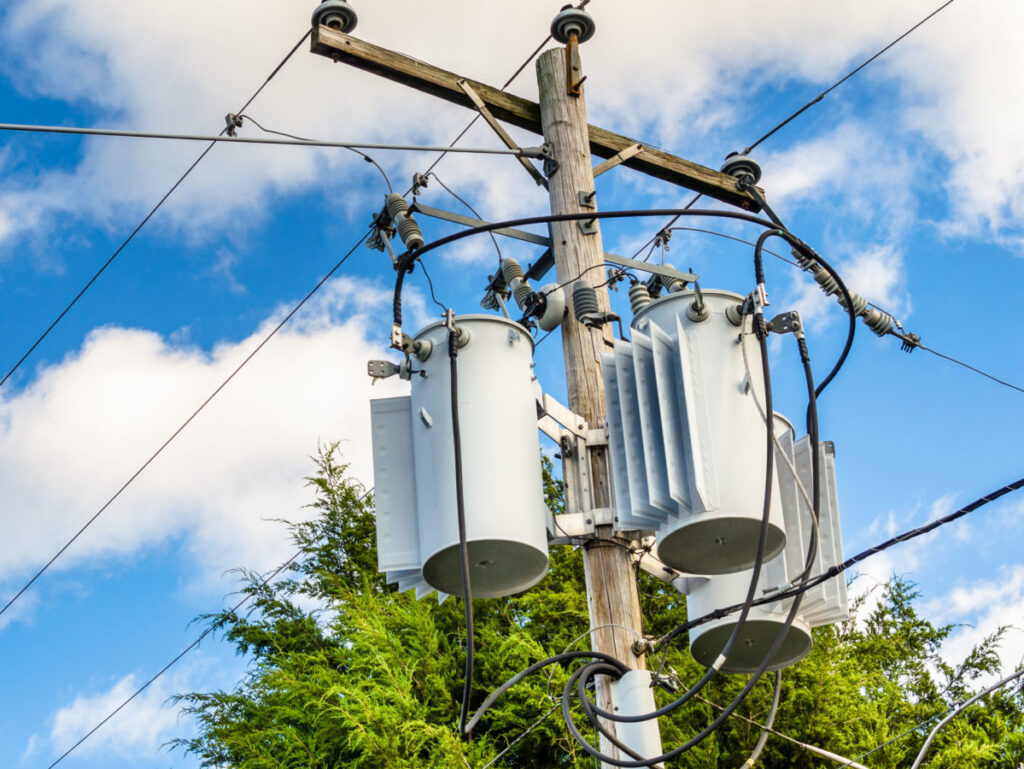Valuable new data sources for utilities

New data sources for power utilities continue to emerge, a trend that is likely to continue in the digital age.
Whether these new data sources can and will be harnessed by utilities for significant value, however, remains an open question. This issue has two components.
First, a utility must practice holistic data management to take advantage of digital data routinely generated by its sensors and systems or external sources to improve its operations and create enterprise value. In doing so, a utility can more easily integrate new data sources as they become available.
Second, the power industry must support efforts to define standards, develop applications and share best practices for new data sources to speed time to value.
If these efforts are made in tandem, value creation by a data-driven utility is a certainty.
Be forewarned: Becoming a data-driven utility through holistic data management practices requires a cultural shift to organization-wide cooperation that will change traditional business processes. Once set in motion, that trend is irreversible.
New data sources
Data is the new enabler of value. Today, nearly every group within a utility organization, on both operations and enterprise sides, should seek to optimize their work and gain competitive advantages through data and its analysis. In an increasingly deregulated marketplace prowled by third parties eager to serve our digitally savvy customers, power utilities must exploit every data source that can yield value.
Today, data is becoming available from previously unexpected sources and in formats, speeds, scale and granularity that challenge our ability to analyze it for actionable insights. Three examples of emerging data sources underscore this point: social media, unmanned aerial vehicles (UAVs, aka “drones”), and robotics. Yet myriad data sources already available within our organizations also confirm the efficacy of holistic data management as the basis for managing these new sources.
Let’s look at both new and existing data sources to understand the urgency of adopting holistic data management, which is the key to data-driven value creation.

Once the transition is made to holistic data management, an ideal architecture reveals the sources of data in lower left, the network paths to operations and enterprise and, on the right, the types of data (light blue boxes) and enterprise groups that can use them (green boxes).
Social media
Prior to smart meters and advanced metering infrastructure, utilities relied on customer phone calls to report and locate outages. Today, land line phones are vanishing, especially among Millennials, the next-generation of utility customers. Mobile phone-bearing Millennials are more likely to be tweeting on the move, able to provide up-to-the-minute descriptions and/ or photos of outages wherever they are.
A utility can use a customer’s Twitter handle as the linkage to their customer information and property address and encourage customers to send outage information using social media (i.e., tweets). If these customers are additionally incentivized to activate their phone’s geo-tagging feature, their social media output can provide GPS coordinates if they are not tweeting from home that can speed repairs and service restoration. Emerging software applications can analyze and link social media reports to an outage management system and distribution management system, triggering a fault detection isolation and restoration (FDIR) application swiftly enough to improve SAIDI and SAIFI reliability indices. (SAIDI = System Average Interruption Duration Index; SAIFI = System Average Interruption Frequency Index.)
The greater the number of participating customers, the more accurate the data informing a utility’s response. Both parties benefit. As customers play a role in their own service restoration, they are engaged with their utility. Research reveals that engaged customers register greater satisfaction with their utility. The utility benefits from swifter service restoration and a level of customer engagement that can lead to other customer-utility collaborations.
UAVs, robotics
Unmanned aerial vehicles or UAVs are one component of unmanned aerial systems (UASs) that rely on ground-based pilots and a communications link between the two. “Robotics” refers to machines equipped with sensors, processing and communications capabilities that can replace humans for difficult, dangerous tasks. Inspecting assets, assessing storm damage, non-destructive testing, maintenance of live lines and other tasks can be accomplished with UAVs and robotics.
Current use cases include performing these tasks on high-voltage transmission lines hundreds of feet above the ground as well as underwater at turbine intakes in hydroelectric facilities.
UAVs, for instance, carry a variety of sensors, including traditional photography, LiDar, PhoDar and infrared. LiDar stands for Light Detection and Ranging, which is a surveying method that uses a laser and its reflected pulses to determine, say, topographical features on the ground. PhoDar, or Photogrammetric Detection and Ranging, creates a three-dimensional “point cloud” that assesses various types of terrain including vegetation. Infrared sensors detect heat at wavelengths invisible to the human eye.
Together, these sensors provide reams of potentially valuable data, if a utility is prepared to recover, store, and process it for actionable insights. UAV data can inform asset management, geographic information systems (GIS), outage management systems (OMS), and storm damage assessments.
Success in this endeavor depends on whether a utility is already practicing holistic data management. Yet the industry as a whole must require vendors who provide the various technologies involved to adhere to standards and industry-friendly use cases that result in best practices for value creation. As in past technology advances in the power industry, however, this sensible step is not a given.
In an ad-hoc survey of colleagues in late 2017, I discovered that these amazing machines and their data outputs remain a few steps ahead of the power industry’s current ability to efficiently route, store and analyze that data for valuable insights.
Consider the hours of aerial photography generated by a UAV. It is impractical and an unwise use of resources to have a human reviewing that data. Instead, we need automated imagery analysis based on standards and best practices that will speed time to value. A coordinated power industry effort in this regard will avoid proprietary solutions, support interoperability and, thus, enable more utilities to cost-effectively adopt these new technologies. Otherwise, the tail wags the dog – not a model for progress in the 21st century.
Becoming a data-driven utility
These eye-catching examples of new data sources simply underscore the value of becoming a data-driven utility and the supporting practice of holistic data management. A brief review of the fundamental concepts involved may be useful here.
Grid operators have long familiarity with operational data from generation units, transmission and some distribution systems that provides the real-time status, performance, and loading of power system equipment – the fundamental information used by system operators to monitor and control the power system. Examples include circuit breaker status (open/closed), line current (in amperes) and bus voltages.
With the advent of digital intelligent electronic devices (IEDs), protection and control equipment also record non-operational data, of less importance to system operators, but the basis for value creation by enterprise groups such as engineering and maintenance.5 Examples include digital fault recorder records, circuit breaker contact wear indicators and dissolved gas/moisture content in transformer oil.
In terms of value, consider the importance of having current data on the health of a substation transformer. Failure to note diagnostic warning signs in a timely manner could result in a costly transformer failure, even a life-threatening explosion, which could take a substation out of service, affecting thousands of customers.

Common, current siloed practices vis-à-vis access to nonoperational data are depicted on the left. The use of a federated data mart to access nonoperational data holistically is depicted on the right. (Source: GE Grid Solutions)
Three basic steps, and one doozy
A utility must first build a strong information and communication technology (ICT) foundation based on standards and open architecture, which integrates and ensures interoperability and backwards and forwards compatibility between devices, networks and databases. This requires cooperation between information technology (IT) and operations technology (OT) personnel, which represents a shift in traditional utility culture.
The next step is to identify and catalogue all sensors and systems and the data they produce, and the end users in the enterprise who can create value from that data. Every IED produces multiple data-producing points known as “data maps.” This leads to an inventory of IEDs and their data maps to help enterprise users understand the types of available data and who needs it. Careful documentation is required, because an IED’s “attributes” reflect that different vendors’ IEDs capture and render different non-operational data in different ways. For instance, data may be generated at a predetermined sampling rate, when a preset threshold is exceeded, or event-driven.
Matching data sources with end-users creates a “data requirements matrix,” which guides the network architecture that sends non-operational data across the corporate firewall into a data repository or warehouse that allows authorized end-users access on-demand.
The ultimate result of all these steps – holistic data management – is to make any and all operational and non-operational data available on-demand by operations and enterprise users who can use it to create value.6
Coming full circle
The value of establishing holistic data management for existing and, indeed, new data sources should be obvious. It is supported by the use of standards for interoperability and cost efficiencies, open architecture for simplicity and the shortest route from data capture to end use and value creation. As new data sources emerge, they can be integrated into a holistic data management approach. Without such an approach, a utility risks its ability to proactively meet marketplace challenges and, therefore, compromises its competitiveness.
References
1 McDonald, John D., “Embracing Holistic Data Management Prepares Utilities for the 21st Century: how power utilities can best manage data in the future, and be transformed,” TechCon North America 2018
2 McDonald, John D., “Drones and Robots: A Data Management Opportunity,” T&D World (29 November 2017)
3 Arghandeh, Reza and Zhou, Yuxun, Big Data Application in Power Systems, Elsevier, 2018; see Chapter 1, McDonald, John D., “A Holistic Approach to Becoming a Data-Driven Utility.”
4 McDonald, John D., “Integrated system, social media, improve grid reliability, customer satisfaction,” Electric Light & Power (Dec. 1, 2012)
5 McDonald, John D., “Extracting Value from Data: Distribution Automation and IEDs,” Electricity Today (May 2013)
6 McDonald, John D., “Managing Big Data: Challenges & Winning Strategies,” Electric Energy T&D (May/June 2014)
John McDonald is a T&D World Executive Insights Board member.





